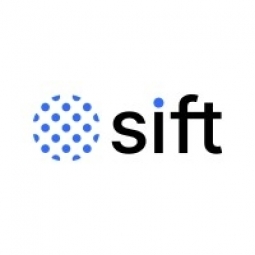Customer Company Size
Large Corporate
Country
- Worldwide
Product
- Chargeback
Tech Stack
- SaaS
Implementation Scale
- Enterprise-wide Deployment
Impact Metrics
- Cost Savings
- Revenue Growth
Technology Category
- Application Infrastructure & Middleware - API Integration & Management
Applicable Industries
- Apparel
- Retail
Applicable Functions
- Business Operation
- Sales & Marketing
Use Cases
- Fraud Detection
Services
- Cloud Planning, Design & Implementation Services
About The Customer
The customer is a world-renowned and award-winning provider of luxury accessories and ready-to-wear apparel, with a global annual revenue surpassing $4 billion. The company produces a wide range of products, including men’s and women’s clothing, purses, footwear, watches, jewelry, eyewear, and fragrances. The company has experienced unprecedented growth in both its physical locations and e-commerce volume, leading to an influx of transactions and a surge of disputes.
The Challenge
The luxury apparel and accessories company was experiencing unprecedented growth in both physical locations and e-commerce volume. With this growth came an influx of transactions and a surge of disputes. By early 2015, the company faced a dilemma: should they expand and adjust to manage customer disputes with manual processes, or find an automated dispute management solution to streamline the process? Managing disputes manually would require the creation of a new department, and all of the hiring, training, and onboarding required to furnish said department. With the EMV liability shift deadline growing ever closer, the team knew they couldn’t gain the expertise needed before disputes became an even bigger problem.
The Solution
The company sought out an automated dispute management solution with long-standing industry knowledge and experience. They chose Chargeback, a SaaS-based, technology-driven solution that could integrate into the company’s brick-and-mortar and e-commerce payment technology stacks effortlessly. Chargeback gave the company immediate access to over a decade of industry knowledge and streamlined automation, resulting in more recovered revenue. With Chargeback, the company could access detailed reporting with time to spare before the EMV liability shift deadline. This allowed the company to record valuable data surrounding brick-and-mortar EMV compliance and take purposeful steps to reduce EMV-related disputes.
Operational Impact
Quantitative Benefit

Case Study missing?
Start adding your own!
Register with your work email and create a new case study profile for your business.
Related Case Studies.

Case Study
Fire Alarm System and Remote Monitoring Sytem
Fire alarm systems are essential in providing an early warning in the event of fire. They help to save lives and protect property whilst also fulfilling the needs of insurance companies and government departments.Fire alarm systems typically consist of several inter-linked components, such as smoke detectors, heat detector, carbon monoxide, manual call points, sounders, alarm and buzzer. The fire alarm system should give immediate information in order to prevent the fire spread and protect live and property.To get maximum protection a shoe manufacturer in Indonesia opted for a new fire alarm system to monitor 13 production sites spread over 160 hectars. Although the company had an existing fire alarm system, it could not be monitored remotely.It was essential that the new system would be able to be monitored from a central control room. It needed to be able to connect to the existing smoke detector and manual call point. Information should be easily collected and passed on to the Supervisory Control and Data Acquisition (SCADA) system. Furthermore, the system should have several features such as alarm management, auto reporting, being connected to many client computers without additional cost, and run 24/7 without fails. The company also needed a system which could be implemented without changing the architecture of the existing fire alarm system.

Case Study
IoT Applications and Upgrades in Textile Plant
At any given time, the textile company’s manufacturing facility has up to 2,000 textile carts in use. These carts are pushed from room to room, carrying materials or semi-finished products. Previously, a paper with a hand-written description was attached to each cart. This traditional method of processing made product tracking extremely difficult. Additionally, making sure that every cart of materials or semi-finished products went to its correct processing work station was also a problem. Therefore, the company desired an intelligent solution for tracking assets at their factories. They also wanted a solution that would help them collect process data so they could improve their manufacturing efficiency.

Case Study
Improving Production Line Efficiency with Ethernet Micro RTU Controller
Moxa was asked to provide a connectivity solution for one of the world's leading cosmetics companies. This multinational corporation, with retail presence in 130 countries, 23 global braches, and over 66,000 employees, sought to improve the efficiency of their production process by migrating from manual monitoring to an automatic productivity monitoring system. The production line was being monitored by ABB Real-TPI, a factory information system that offers data collection and analysis to improve plant efficiency. Due to software limitations, the customer needed an OPC server and a corresponding I/O solution to collect data from additional sensor devices for the Real-TPI system. The goal is to enable the factory information system to more thoroughly collect data from every corner of the production line. This will improve its ability to measure Overall Equipment Effectiveness (OEE) and translate into increased production efficiencies. System Requirements • Instant status updates while still consuming minimal bandwidth to relieve strain on limited factory networks • Interoperable with ABB Real-TPI • Small form factor appropriate for deployment where space is scarce • Remote software management and configuration to simplify operations

Case Study
Digital Retail Security Solutions
Sennco wanted to help its retail customers increase sales and profits by developing an innovative alarm system as opposed to conventional connected alarms that are permanently tethered to display products. These traditional security systems were cumbersome and intrusive to the customer shopping experience. Additionally, they provided no useful data or analytics.

Case Study
How Sirqul’s IoT Platform is Crafting Carrefour’s New In-Store Experiences
Carrefour Taiwan’s goal is to be completely digital by end of 2018. Out-dated manual methods for analysis and assumptions limited Carrefour’s ability to change the customer experience and were void of real-time decision-making capabilities. Rather than relying solely on sales data, assumptions, and disparate systems, Carrefour Taiwan’s CEO led an initiative to find a connected IoT solution that could give the team the ability to make real-time changes and more informed decisions. Prior to implementing, Carrefour struggled to address their conversion rates and did not have the proper insights into the customer decision-making process nor how to make an immediate impact without losing customer confidence.








